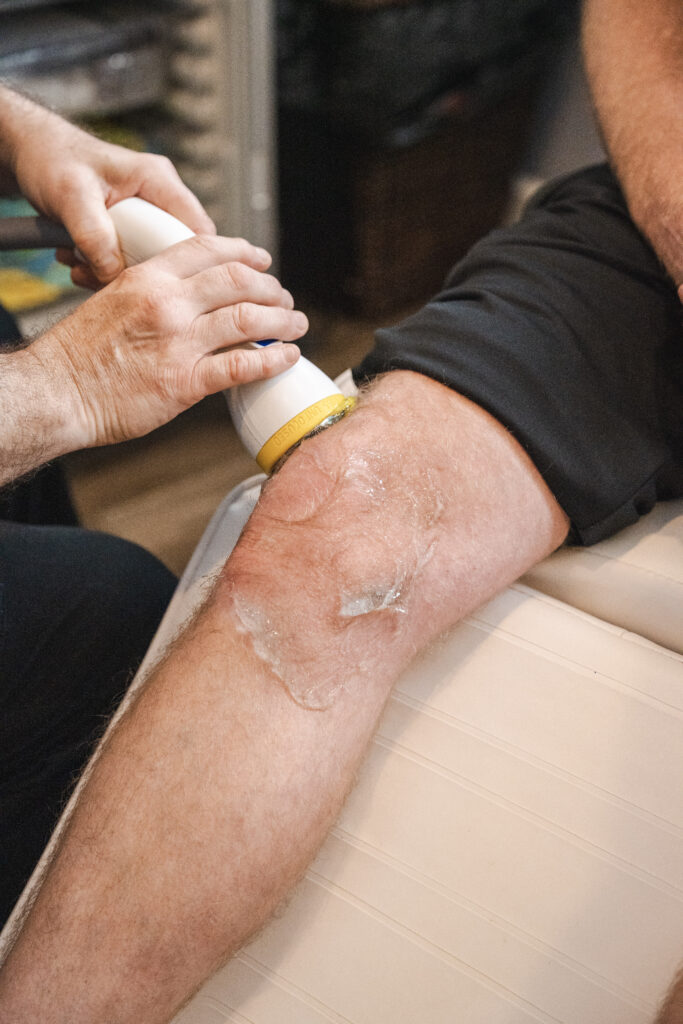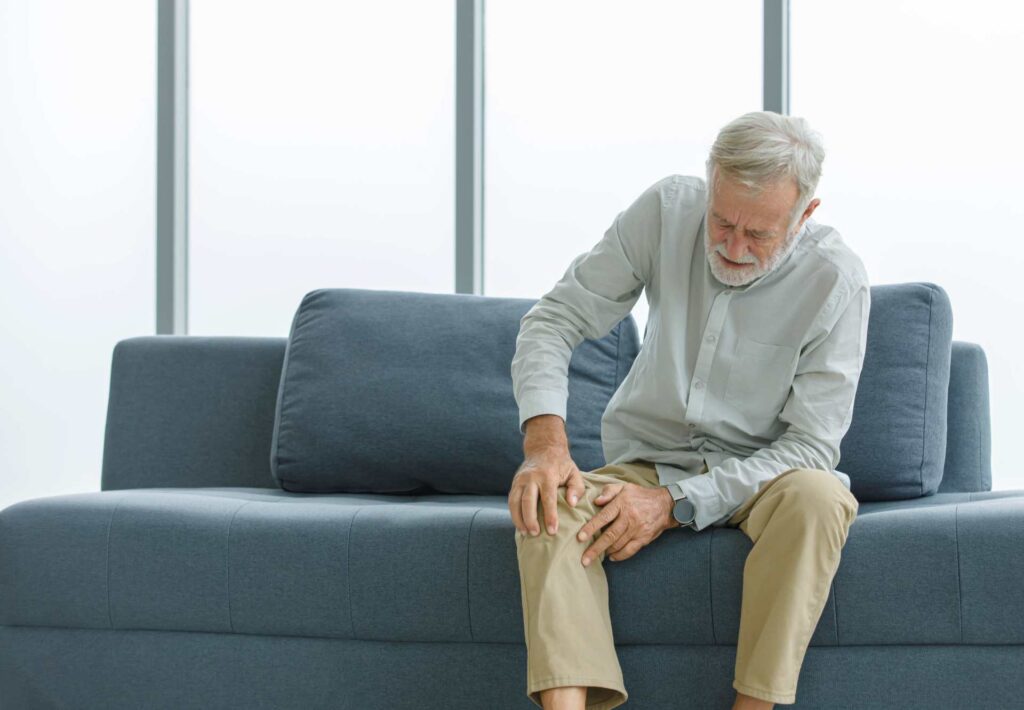Patellar tendinopathy frequently appears as a prevalent source of knee pain, especially among athletes and individuals participating in high-impact activities. Also called Jumper’s Knee, this condition affects the tendon that links the kneecap (patella) to the shinbone, resulting in pain and challenges in mobility. Shockwave therapy, a modern and non-invasive treatment, has gained recognition in the medical field for its effectiveness. By utilizing high-energy acoustic waves, shockwave therapy encourages the body’s innate healing mechanisms, focusing on the impacted area and facilitating recovery, thus presenting itself as a viable treatment option for those grappling with knee pain from patellar tendinopathy.
Causes & Symptoms of Patellar Tendinopathy
Tendinopathy, at its core, refers to a condition where tendons, the fibrous structures attaching muscles to bones, experience inflammation or damage. This can lead to symptoms like pain, swelling, and hindered function.
Zooming into patellar tendinopathy, this particular form of tendinopathy involves the tendon connecting the kneecap (patella) to the shinbone. It’s a condition especially familiar to those frequently engaging in physical activities, and it’s often characterized by pain just below the kneecap. Multiple factors can give rise to this ailment, including but not limited to:
- Repetitive Strain: Continuous jumping or abrupt changes in activity levels.
- Biomechanical Factors: Such as alignment or structural abnormalities.
- Improper Training Techniques: Like poor form during exercise or inadequate equipment.
Symptoms typically manifest as localized pain, swelling, and a discernible difficulty or hesitation when engaging in activities that strain the knee, such as jumping, running, or even ascending stairs.
What is Shockwave Therapy?
Shockwave therapy, in simple terms, is a non-invasive medical treatment that makes use of high-energy sound waves or acoustic waves to stimulate healing in injured areas of the body. These sound waves are introduced externally, targeting the specific area that needs healing.
The mechanism behind shockwave therapy revolves around the idea of creating controlled microtrauma in the targeted tissues. This microtrauma, in turn, stimulates a series of biological responses, including increasing blood flow and cellular repair mechanisms, ultimately accelerating the body’s inherent healing processes. While it might sound intense, this therapy is generally pain-free and is used to treat a range of conditions, from chronic pain, tendonitis, and musculoskeletal conditions to even wound healing.
How Does Shockwave Therapy Help Treat Patellar Tendinopathy?
When applied to areas affected by patellar tendinopathy, Shockwave Therapy works wonders by stimulating cellular repair mechanisms. The high-energy acoustic waves, when directed at the affected tendon, create a controlled inflammatory response. This response jump-starts the body’s natural healing mechanisms, promoting blood circulation and collagen formation in the targeted area.
Furthermore, these waves break down any scar tissue or calcifications that might have formed in the tendon due to the condition. As these barriers are eliminated, and the healing process is expedited, patients typically experience reduced pain and improved mobility over time. As such, shockwave therapy emerges as an effective, non-invasive option for those wrestling with the challenges of patellar tendinopathy.




